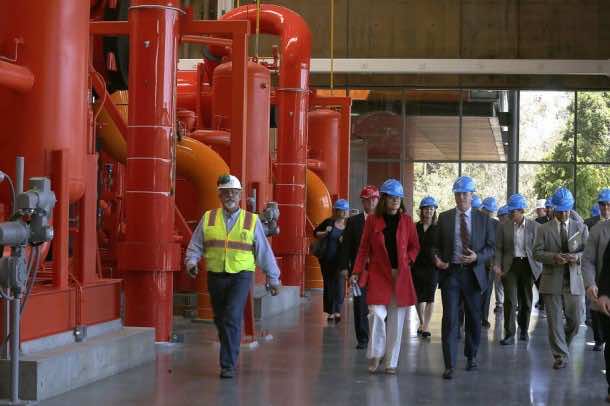Rarely a university makes the news for going green. Let’s face it; They are the ones who should have gone green ages ago owing to constant research being done all around in their campuses especially the engineering departments. But Stanford is not your average institute. It is spread over an area of 8,000 acres having 1,000 buildings covering 15 million square feet. If the entire heating system is on natural gas, the system will be the culprit of 150,00 tons of emissions annually. Thus it is more of a small city than just an educational campus, so converting the gigantic heating requirement was by no means an easy feat.
The new system has a heat recovery role that is being dubbed as the first of its kind. The bulk of the energy requirement of the university will come from solar panels, and emissions have been reduced by 68 percent and the fossil fuels have been reduced to 65%. The old cogeneration power plant has ben replaced after 28 years of carbonous service. It used to heat through underground steam pipes and cool with the help of chilled water pipes. The nature of heating or cooling depended on the utilization of the room. Computer rooms and certain labs need cooling while classrooms, offices and conference areas require heat. The old system used to provide the cold water and hot steam individually to these places.
The University engineers noticed that 75 percent of the times, the cooling, and heating passages intersected. They planned to use their proximity in a technique called the heat recovery system. They did this by replacing steam pipes with hot water pipes and retrofitting 155 steam settings to have hot water instead. When the chilled fluid is circulated in the building, it gets heated up. This heat is then transferred to the hot water pipes to be used as heating energy for the classrooms, etc. It is carried through electrically powered heat pumps. The system is controlled by an all-new software specially built for this purpose.
The new system is calculated to be 70 percent more efficient than the previous cogeneration system. Due to the circulation nature of the water, it will have less water resource requirements by a margin of 70%, thus cutting the costs of water totaling 15-18 %. The main chunk of the electricity used by the university will now come from the 68 Megawatt solar farm being installed in California along with 5 MW of rooftop panels being installed around the campus. The remaining power requirement will be met by grid electricity, 25 percent of which is renewable itself, so, a total of 65 percent of the electricity will be from renewable sources.
This kind of system involving heat recycling and recovery running on green electricity and efficient distribution along with minimal wastage of water hasn’t been installed anywhere else in the world. It is hoped that more and more organizations will go green based on this model.
Here is the full video of the new system:




